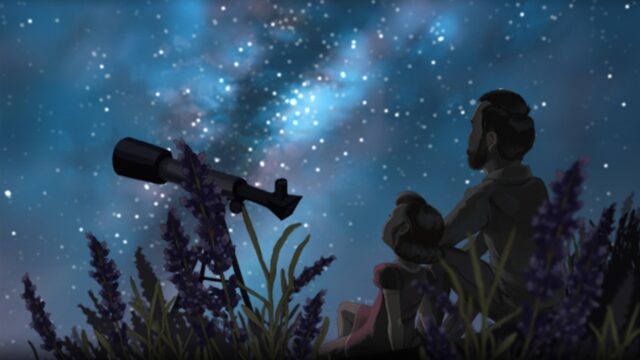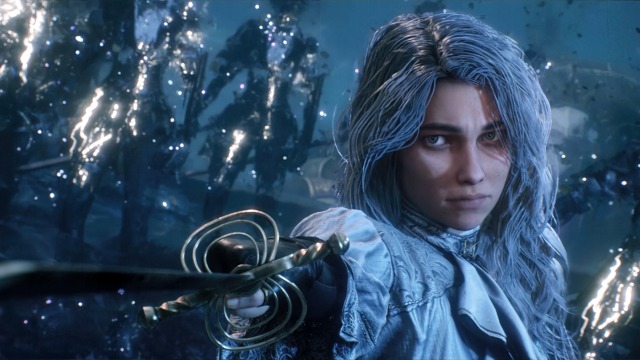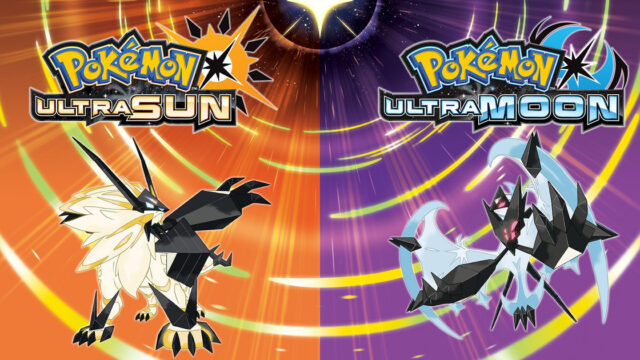Themselves with Rabbits. Mario + Rabbids: Kingdom Battle Review
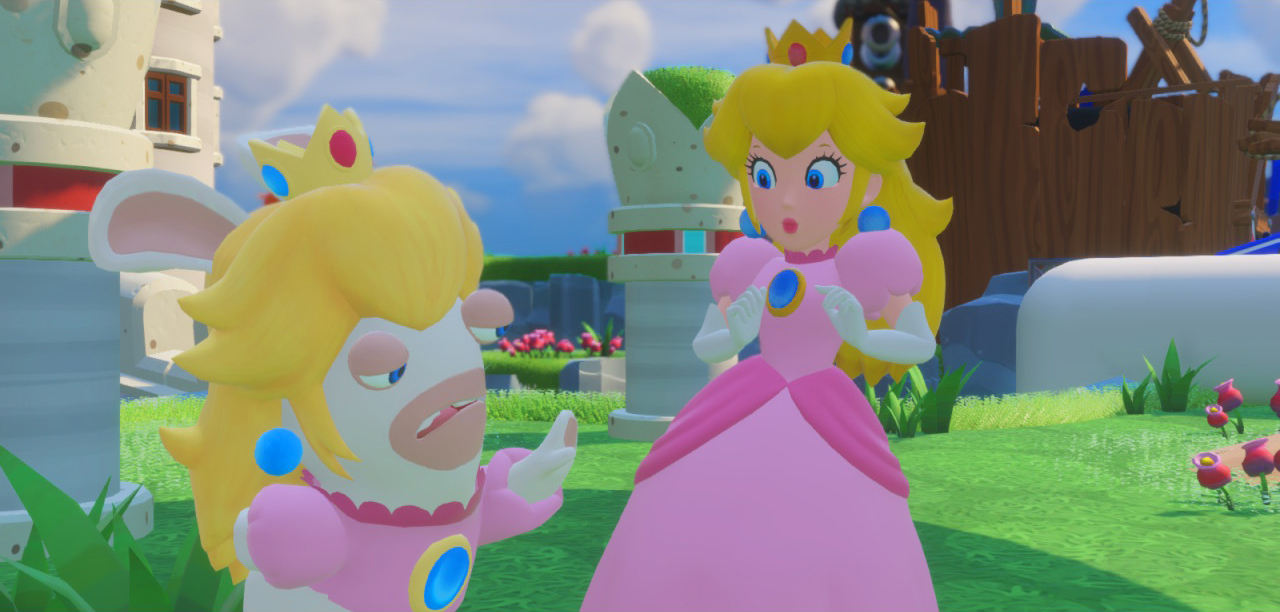
Remember this: the gaming industry is a gathering of crazy people. People with whimsical minds and strange ideas, ready to break through the gray blockbuster curtain at any moment. You can complain about the soullessness of the conveyor belt and wave your fists at corporations, but – surprise! – they are not from this world. Today they can make Far Cry 18, and tomorrow wake up, thoughtfully chew breakfast, go to their job at a very large gaming company, and knowingly say, “We need a game about Mario and crazy rabbits.”
And the best part is, someone with deep pockets will nod approvingly and, shifting their cigar to the other corner of their mouth, say, “Xcom about Mario and crazy rabbits.”
And as long as this is happening, we, as ordinary consumers, have nothing to worry about. Our leisure time is in the hands of true geniuses, and no budgets will corrupt them.
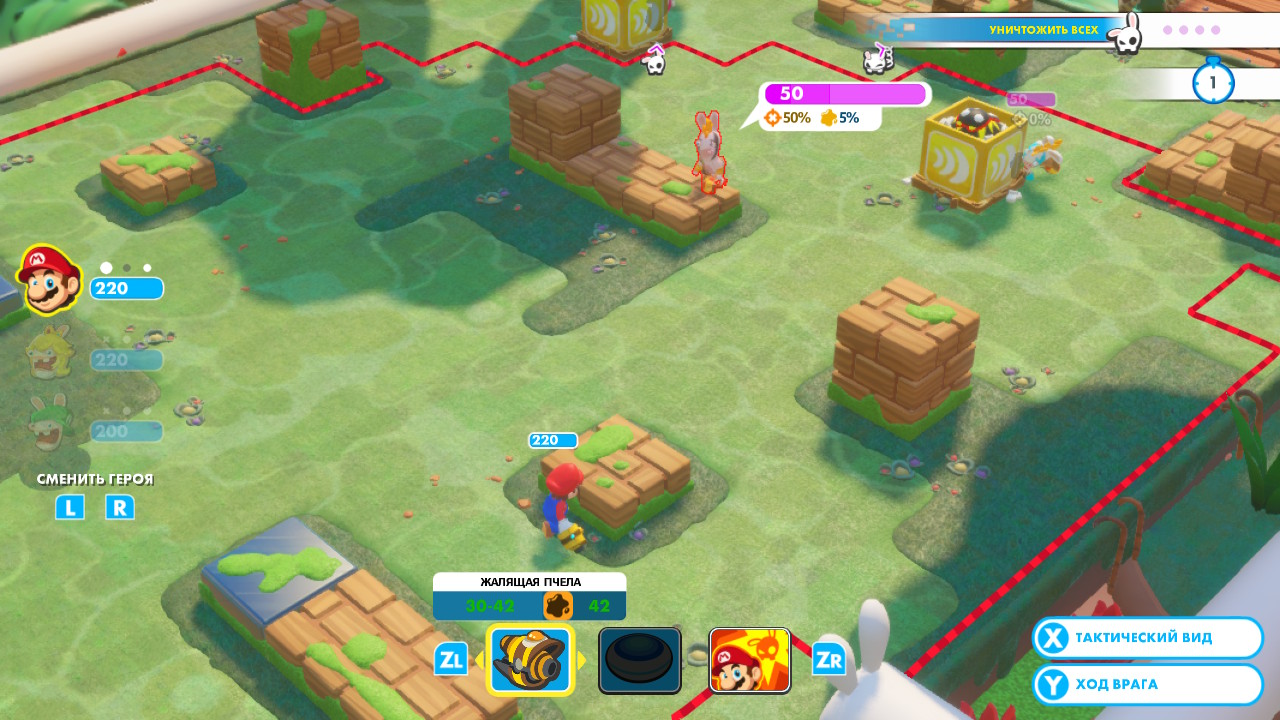
In order to bring together the famous universes of Nintendo and Ubisoft, Mario + Rabbids: Kingdom Battle did not require any special extravagance. The notorious silly rabbits, traveling in their time-washing machine, stumble upon a device for merging objects and, being fools, immediately try it out. Several curious hybrids later, reality cracks and forms a vortex that sucks in the rabbits, along with a whole bunch of fan stuff dedicated to the Mushroom Kingdom.
That’s where the gang arrives, causing yet another trouble for the mustachioed plumber’s homeland. This time – a cross-eyed, screaming rabbit with a plunger on its head.
All doubts about the feasibility of the crossover are dispelled in the first few minutes. Yes, the glorious days of Raving Rabbids are already behind us, and no one has laughed at the trademark “BWAH!” for a long time, but in the saccharine fairy-tale ambiance, the rabbits find a new life. Mostly, it consists of mocking familiar childhood characters and heroes: Goombas splash around in a huge toilet in a meadow in front of the castle, family-friendly creatures dry on green hills, ponds are filled with torches and rubber ducklings – and so on. And the rabbit version of Princess Peach, who joins our team from the very beginning, constantly takes selfies against this mess.
The humor of the crazy creatures is still silly, but it works. Not so much on its own (although we have already missed it), but in tandem with the inhabitants of the kingdom. Mario and company are a successful contrast to toilet jokes, and every time their naive kindness clashes with the straightforwardness of the aliens, the effect of both is doubled. There is even some hilarious cultural dialogue in it, if you will.
At times, however, Ubisoft pulls the blanket too much in favor of their protégés, resulting in fake notes like “The Valley of Cowards” as a location – or, for example:
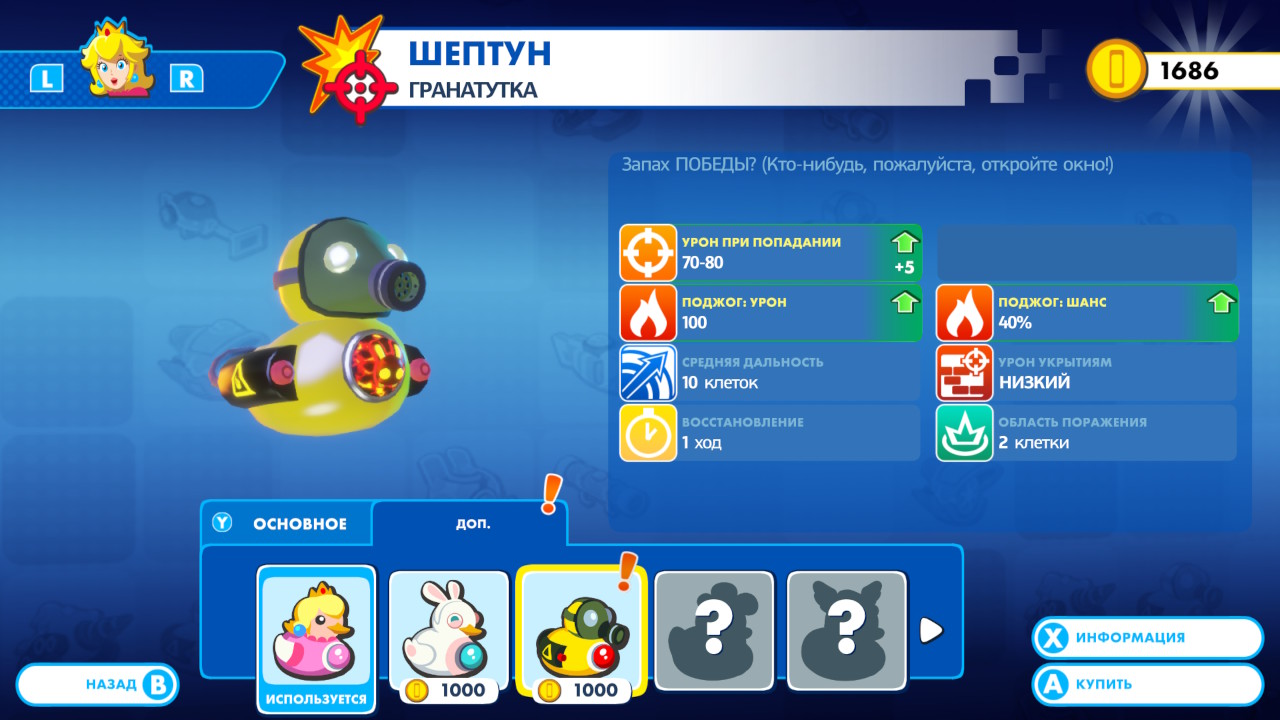
We would be happy to blame our localization, but no. The translators captured the meaning as accurately as possible. And overall, since we’re on the subject, the Russian version is surprisingly good. Considering that rare lines of text in the game can’t do without some sarcasm, conveying the original flavor was not an easy task. However, most of the jokes were preserved, and those that were incompatible with the great and mighty were replaced with witty equivalents. Not like some.
Well, okay then! Underneath the humorous exterior, we actually have a serious strategy game here, with numbers and all. Kingdom Battle borrows a lot from the aforementioned game. XCOM Here is the basic principle of movement “by cells”, and a step-by-step manner of combat, and calculating hits by throwing a dice, and unchanging “crits” – experienced defenders of the Earth will feel at home. Even some character abilities are exactly the same as in Enemy Unknown.
And no matter what they say, the tactical foundation of the game does not strive to simplify too much. One of the most noticeable “casualties” is only the eliminated factor of distance. The chance of dealing damage now depends solely on the cover behind which the target is located. Some blocks will definitely take a salvo, others will only protect with a 50% probability, and on open ground, an unlucky soldier who falls into the enemy’s firing zone will definitely get hit.
To be honest, it’s even better this way. Especially for beginner strategists who want to plan and act, rather than negotiate with His Majesty Random every time the outcome of the battle is determined by a tenth of a percent. Taking a step towards the arcade, Mario + Rabbids has provided itself with a transparent and reliable system of rules, making it more enjoyable to play.
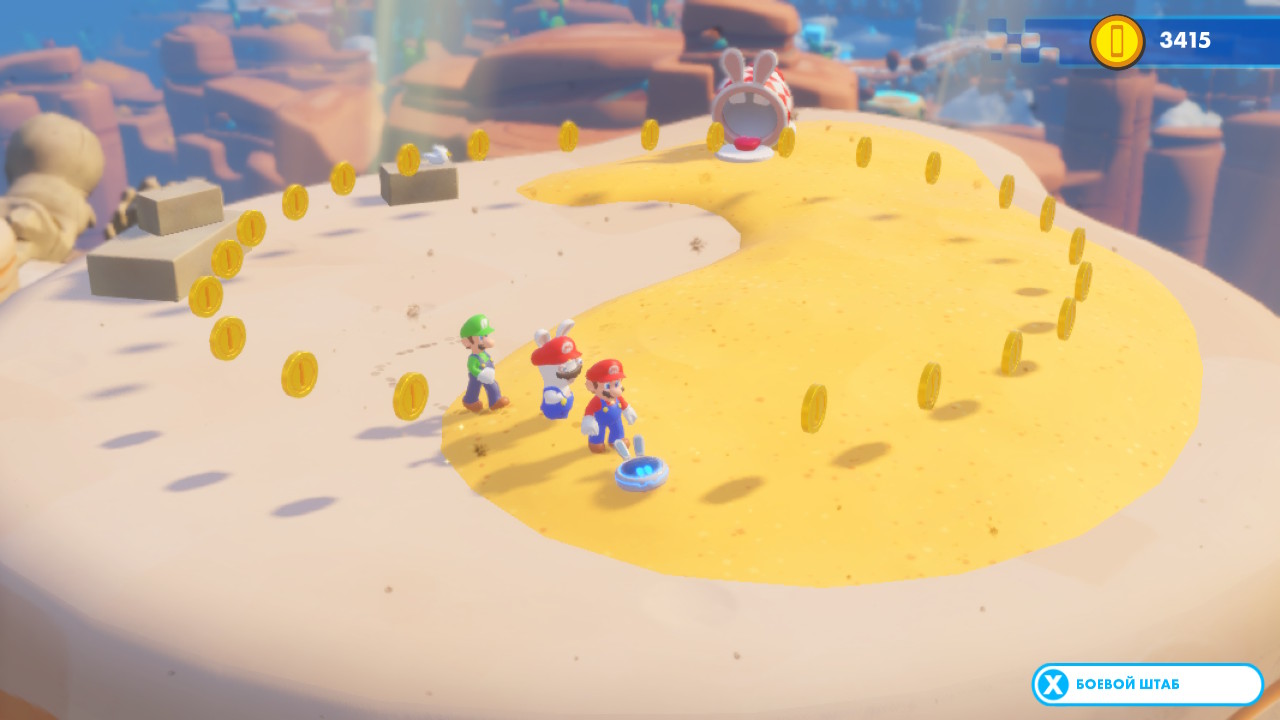
Coins are not spared here, but it is still necessary to spend them wisely.
However, it is by no means easier. The deceptive impression of the “kindergarten X-com” Kingdom Battle certainly creates, but only until it gradually introduces each element, stringing them together on a turn-based basis. About half of the game is like a tactical puzzle, where you are introduced to basic types of enemies, taught to use buffs, and asked to accompany an improvised VIP for the first time, and so on. The missions are interesting and mostly not difficult at all, but that’s how it should be – the real test is still ahead.
Somewhere around the middle, when most of the trump cards are already on the table, the difficulty spikes so sharply that you have to quickly rethink all your actions. You no longer come out of battles as an unconditional winner, but receive a reserved “Good” or, worse, an offensive “Not bad” as an evaluation. The kindergarten is replaced by a fierce challenge with complex tasks and the most uncomfortable combinations of enemies, which can no longer be taken head-on.
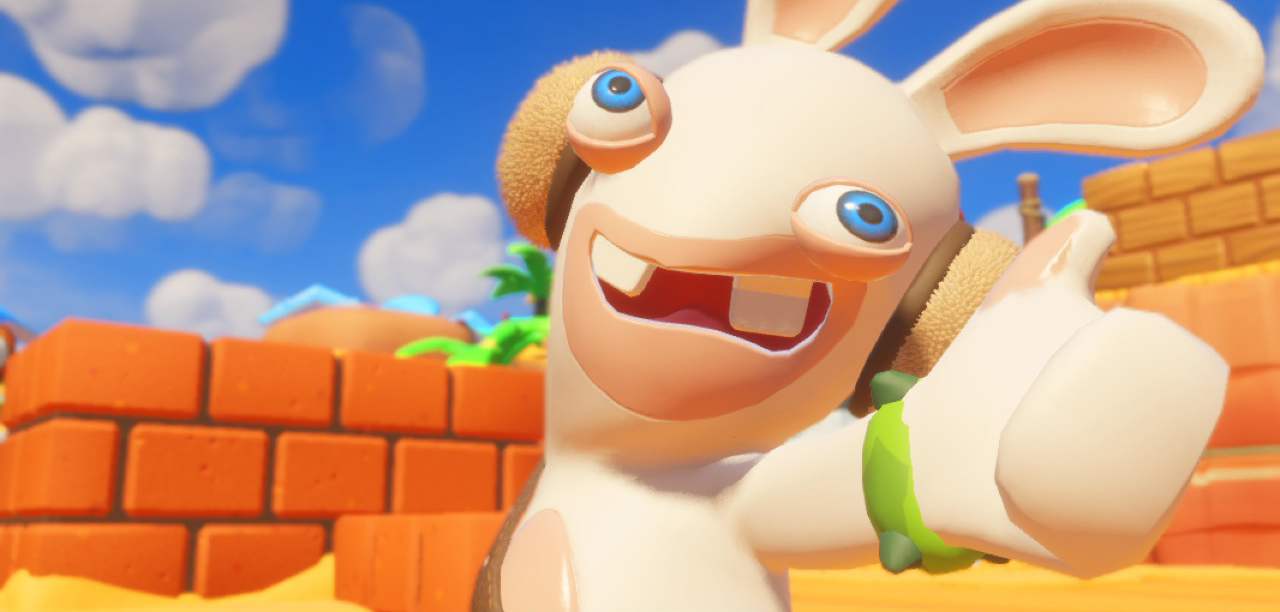
This is simultaneously very, very cool and a little bit bad. It’s cool because by that time the fights are filled with a bunch of extremely simple nuances, on which dozens of spontaneous or, on the contrary, carefully planned situations are built. In some arenas, for example, there is a whirlwind between moves. It can equally well either eliminate half of your team from the game or become an excellent support when smoking out the long-eared villains from their hiding places, right under brother Luigi’s sniper shot.
Or there is such a wonderful thing as special blocks. When they are destroyed, a certain effect like “silence” or classic area burning is triggered on the nearest cells, which, together with the properties of the weapons, allows for launching long chain reactions of mass destruction. When the rabbit you set on fire touches a comrade, and he in turn runs under the explosive salvo of the princess, which destroys a repelling block, and together with his healer flies off the map, it’s hard not to break into a maniacal smile. The last time a similar pleasure was probably only provided by Worms Armageddon.


And it’s bad because, well, sometimes it’s just too much. Sometimes a series of simple skirmishes is followed by a pointless 25-minute battle, where one wrong move ruins all plans because enemies freely teleport around the map and your heroes are kidnapped by ghosts. Individual battles in terms of difficulty almost surpass the subsequent boss fights, which is at least strange. Of course, you can turn on “Easy mode” and enjoy an endless supply of hit points – but somehow, you know, you disdain it.
By lucky chance, in difficult situations, the slightly unbalanced gameplay comes to the rescue. An unbeatable strategy is to take Luigi Rabbit into your team and shamelessly tank all the damage. His ability to drain health from enemies and heal allies with the same effect is so useful that the need for professional medics quickly disappears.
There is another problem here – Kingdom Battle severely limits the squad customization options. Each hero has a predetermined class and arsenal, and the skill tree is linear and does not provide unique development vectors, so there is no variety in builds in principle. Roughly speaking, Mario’s hammer is considered strictly alternative weaponry, so you won’t be able to retrain the cheerful Italian with a focus on close combat. Your Mario will always be more or less similar to Mario from a hypothetical Vasya’s game, no matter how hard you try.

And not to mention that they won’t let you assemble an arbitrary team. The captain of the trio must be Mario himself, and the rest must represent both universes, otherwise no way. With a fairly modest roster and taking into account common sense (what squad is complete without a healer?), there aren’t many combinations left, which, again, affects the depth of the process.
However, there is already plenty of room for tactics. Juggling a small number of characters, trying different combinations, you don’t get tired after 10 or 20 hours – and the game actively supports this excitement, putting new and new obstacles in your way. Yes, it can be incredibly difficult at times, but I never felt excessive tension or fatigue. On the contrary, I repeatedly restarted battles in pursuit of the coveted “Perfect” rating. Because it’s interesting and fun.
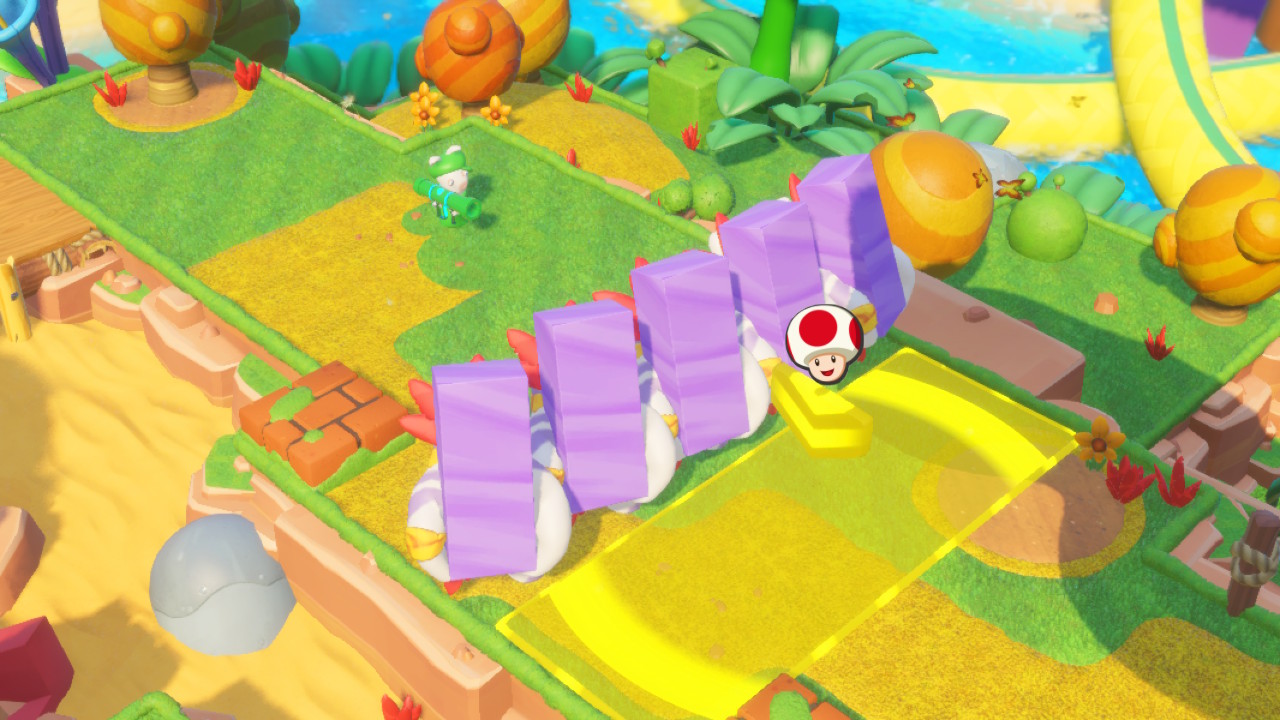
To the biggest mistake in life: 3… 2… 1…
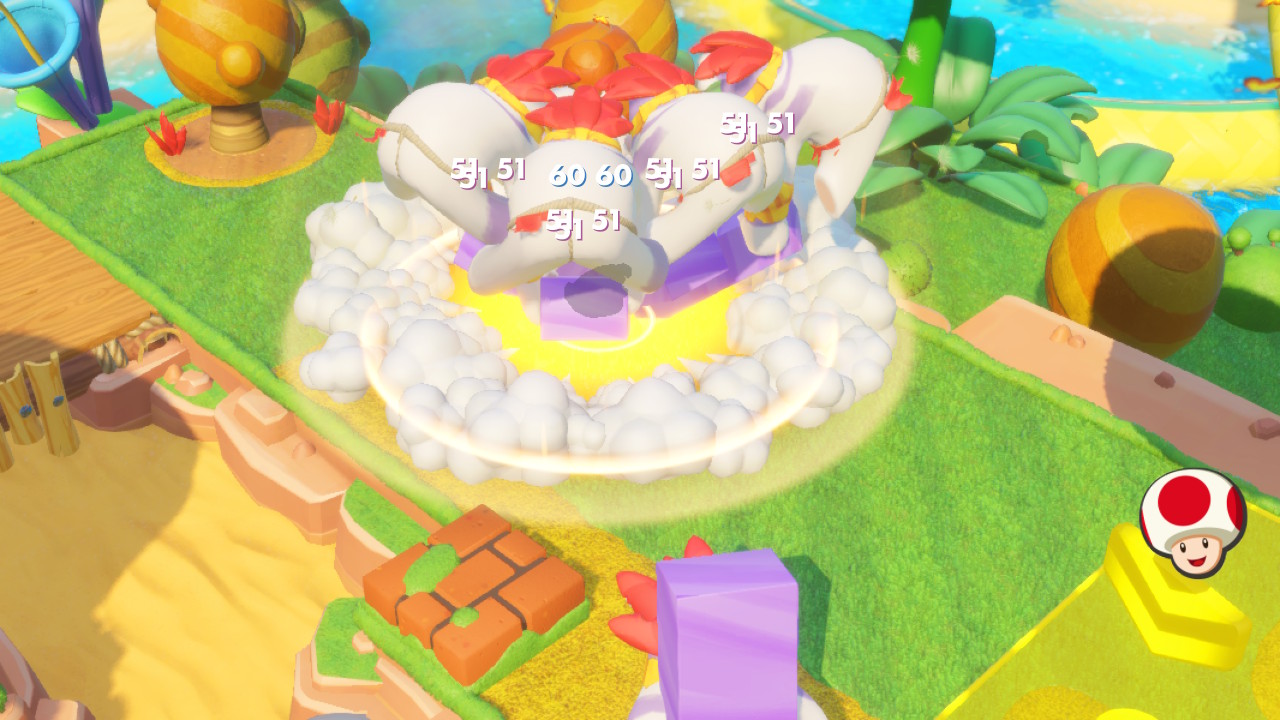
The combat part of Mario + Rabbids is closely intertwined with the exploration part. In between battles, you can freely roam around the Mushroom Kingdom, solving puzzles and hunting for collectibles. This aspect of the game doesn’t hold any special intrigue, but it serves as a great break between action episodes and perfectly connects everything that is happening together.
Perhaps my main complaint about XCOM has always been its lack of coherence. The fact that it doesn’t have a common game world and all its elements exist at an infinite distance from each other. And although I understand perfectly well why this design is justified, it’s difficult for me to perceive my squad’s missions as something significant and, more importantly, cohesive when I’m essentially just playing a set of scenarios with a common theme, choosing them through a separate hub.
Click! Loading screen. Headquarters. Click! Loading screen. Battlefield. Click! Loading screen….
With Kingdom Battle, it’s a completely different story. Mario never falls out of the world, every battle arises on his path and unfolds right there, on the spot. The same location where blasters were just whistling can be revisited and continue onwards. The whole game is a literal journey forward, and when there is a path, there is also a desire to find out what’s at its end. XCOM, despite being driven by a plot, felt like a purposeless and scattered sandbox. Mario + Rabbids feels like a real adventure.

Of course, there is no limit to perfection. Specifically, here they could have made the puzzles more difficult and the rewards for them more expressive: pushing another box to another pressure plate for a 3D model in the gallery, to be honest, gets a little boring. It would be nice if they gave some kind of appearance to the characters, or something…
On the other hand, the vibrant settings and incomparable music are already a worthy reward for combat successes. The process of exploring is so relaxing that you don’t really think about any rewards, clicking through simple puzzles by the dozen.
The impression is slightly marred by technical roughness. Sometimes the camera gets stuck, the sound stutters, or the frame rate drops by two or three times for a few seconds – these are minor issues, but they easily show that Kingdom Battle was not made by Nintendo. No, these are the same people who spend months patching their “Assassin’s Creed”, but this time they made a great effort to minimize software flaws.
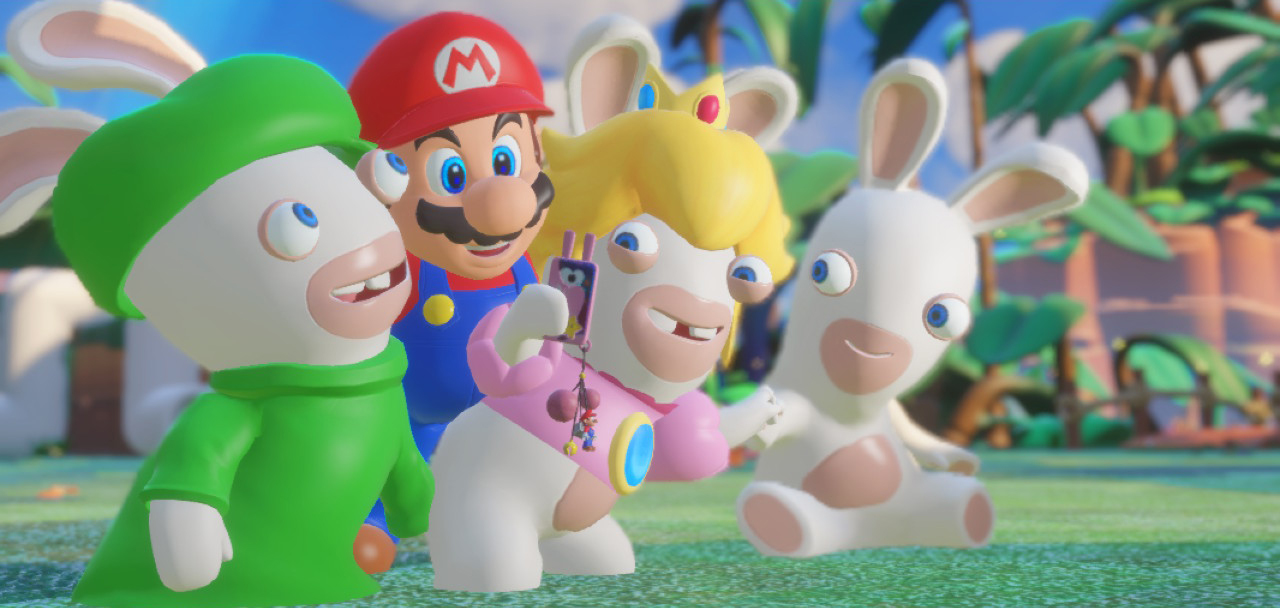
Overall, Mario + Rabbids, contrary to pessimistic forecasts after E3, turned out to be far from a seasonal filler in anticipation of the bomb called Mario Odyssey, but a worthy contribution to the “big” lineup of hits for the Switch and simply a wonderful game. At times, it restrains its own tactical potential, at times it misbehaves with difficulty and balance – but there are even more reasons for a sequel. Ubisoft knows how to fix their mistakes.
And who knows, maybe Rayman will join in. Crazy people can do anything, remember?
Share
Discuss
More Reviews


